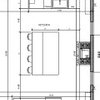Spray Foam Insulation= Can of Worms
mdev
15 years ago
Featured Answer
Sort by:Oldest
Comments (22)
worthy
15 years agodavid_cary
15 years agoRelated Professionals
Henderson Architects & Building Designers · Lexington Architects & Building Designers · Panama City Beach Architects & Building Designers · Shady Hills Design-Build Firms · Colorado Springs Home Builders · Lomita Home Builders · Catonsville General Contractors · Chowchilla General Contractors · Hillsboro General Contractors · Klamath Falls General Contractors · North New Hyde Park General Contractors · Phenix City General Contractors · Valley Station General Contractors · Waianae General Contractors · Warrenville General Contractorssierraeast
15 years agoenergy_rater_la
15 years agomdev
15 years agomightyanvil
15 years agosierraeast
15 years agoklaire2001
15 years agomdev
15 years agoenergy_rater_la
15 years agomdev
15 years agorollie
15 years agomanhattan42
15 years agomightyanvil
15 years agomdev
15 years agoenergy_rater_la
15 years agomdev
15 years agoemjayishere
15 years agomightyanvil
15 years agomightyanvil
15 years agomightyanvil
15 years ago
Related Stories

MATERIALSInsulation Basics: What to Know About Spray Foam
Learn what exactly spray foam is, the pros and cons of using it and why you shouldn’t mess around with installation
Full Story
GREEN BUILDINGInsulation Basics: Heat, R-Value and the Building Envelope
Learn how heat moves through a home and the materials that can stop it, to make sure your insulation is as effective as you think
Full Story
GREEN BUILDINGEcofriendly Cool: Insulate With Wool, Cork, Old Denim and More
Learn about the pros and cons of healthier alternatives to fiberglass and foam, and when to consider an insulation switch
Full Story
REMODELING GUIDESCool Your House (and Costs) With the Right Insulation
Insulation offers one of the best paybacks on your investment in your house. Here are some types to discuss with your contractor
Full Story
GREEN BUILDINGInsulation Basics: Designing for Temperature Extremes in Any Season
Stay comfy during unpredictable weather — and prevent unexpected bills — by efficiently insulating and shading your home
Full Story
WINDOW TREATMENTSEasy Green: 9 Low-Cost Ways to Insulate Windows and Doors
Block drafts to boost both warmth and energy savings with these inexpensive but effective insulating strategies
Full Story
GREEN BUILDINGInsulation Basics: Natural and Recycled Materials
Consider sheep’s wool, denim, cork, cellulose and more for an ecofriendly insulation choice
Full Story
KNOW YOUR HOUSEKnow Your House: The Basics of Insulated Concrete Form Construction
Get peace and quiet inside and energy efficiency all around with this heavy-duty alternative to wood-frame construction
Full Story
PETS5 Finishes Pets and Kids Can’t Destroy — and 5 to Avoid
Save your sanity and your decorating budget by choosing materials and surfaces that can stand up to abuse
Full Story
DIY PROJECTSDining Set Makeover: Paint and Tea-Tinted Fabric Make Old Chairs New
Reclaim dated dining chairs for far less than buying new, using spray paint, modern fabric and a handful of tea bags
Full StorySponsored
Custom Craftsmanship & Construction Solutions in Franklin County
More Discussions











mdevOriginal Author